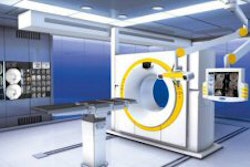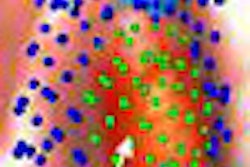Clinicians are ordering up imaging exams for pinpointing metastatic prostate tumors, but the results are not likely to be helpful unless prostate-specific antigen (PSA) levels are about 5 ng/mL and/or the PSA doubling time is greater than 10 months, according to researchers from the Cleveland Clinic Foundation in Ohio.
"Managing biochemical failure in patients following treatment of prostate cancer is a common clinical problem. Imaging studies are often obtained to identify distant metastases and guide treatment," said Dr. Toni Choueiri, a hematology and medical oncology fellow.
Choueiri and colleagues presented their study at the 2007 Prostate Cancer Symposium, sponsored by the American Society of Clinical Oncology (ASCO), and the American Society for Therapeutic Radiology and Oncology (ASTRO), as well as the Society of Urologic Oncology (SUO), held in Kissimmee, FL.
For their retrospective study, the researchers scanned the Cancer of the Prostate Strategic Urologic Research Endeavor (CaPSURE) database, a U.S. national observational registry with longitudinal data on men with biopsy-proven disease.
According to their data, between 1990 and 2004, there were 13,000 prostate cancer patients in CaPSURE, of which 7,311 underwent local therapy. Of those, 25% had a PSA recurrence post-treatment.
"Median trigger prostate-specific antigen was 1.2 ng/mL," which is when clinicians sought imaging tests, Choueiri explained. However, only 11% had CT, MRI, or bone scan results that revealed suspicious lesions, leading the group to conclude that "PSA can be used to predict systemic progression after PSA rise, reducing the need to use costly imaging techniques."
The researchers also found that after adjusting for variables, including patient age and the type of imaging, the chance of having a negative imaging study was 9.1 times more likely when the patient had a trigger PSA that was 5 ng/mL or less when compared to men with trigger PSA greater than 5 ng/mL.
They also determined that the chance of having a negative imaging study was 4.1 times more likely when the patient had a PSA doubling time that was 10 months or greater when compared with men who had PSA doubling times of less than 10 months.
Dr. Robert Vogelzang commented on the study, pointing out that imaging was best-suited for patients who complained of other symptoms post-treatment.
"These imaging tests for rising PSA are almost always negative," said Vogelzang, a professor of radiology at Northwestern University's Feinberg School of Medicine in Chicago. "About the only time you find something is when a patient who has had surgery or radiation for cancer comes in and says, 'Doc, I've got this pain in my hip.' And when you image the hip, there is something there."
By Ric Susman
AuntMinnie.com contributing writer
March 26, 2007
Related Reading
Researchers call for update of prostate cancer staging system, February 28, 2007
Not all treatments for early prostate cancer equally effective: study, February 27, 2007
Copyright © 2007 AuntMinnie.com




















